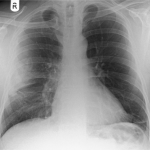I’ve generally written a post every month reviewing an article from the Journal of Trauma exactly 20 years earlier that illustrates the history of some of the things we do now. I’m reaching further back in the past today, looking 50 years ago to the July 1961 issue of the first volume of the Journal.
Most trauma hospitals do not see many gunshots. There are exceptions, of course, in more urban areas. Much of what we’ve learned about taking care of gunshot wounds is based on experiences gained from the military during wartime. In the 15 years after World War II, many hospitals were treating civilian gunshot wounds like their military counterparts.
A paper published in 1961 reported the current practice at a number of trauma hospitals across the US. Remember, there were no “trauma centers” at the time. These reports were from Bellevue in New York, St. Louis, Cook County in Chicago, Galveston, Columbus and others.
A total of 368 wounds were managed, and more than 300 were cared for without the wound debridement that had been the norm. The authors found that most did very well with cleansing and antibiotic treatment. They concluded that debridement was not necessary unless a vascular injury was also present. It was believed that the firearms found in civilian practice were universally low velocity weapons which did not inflict the degree of tissue damage of military weapons.
We generally follow this tenet to this day. Most handgun wounds do not need any special debridement. Rifle, shotgun and assault weapon injuries typically do, and is best carried out in an OR. Antibiotic use has decreased significantly, in many cases to a single dose of a drug that covers typical skin bacteria.
Reference: The indications for debridement of gun shot (bullet) wounds of the extremities in civilian practice. J Trauma 1(4):368-372, 1961.


